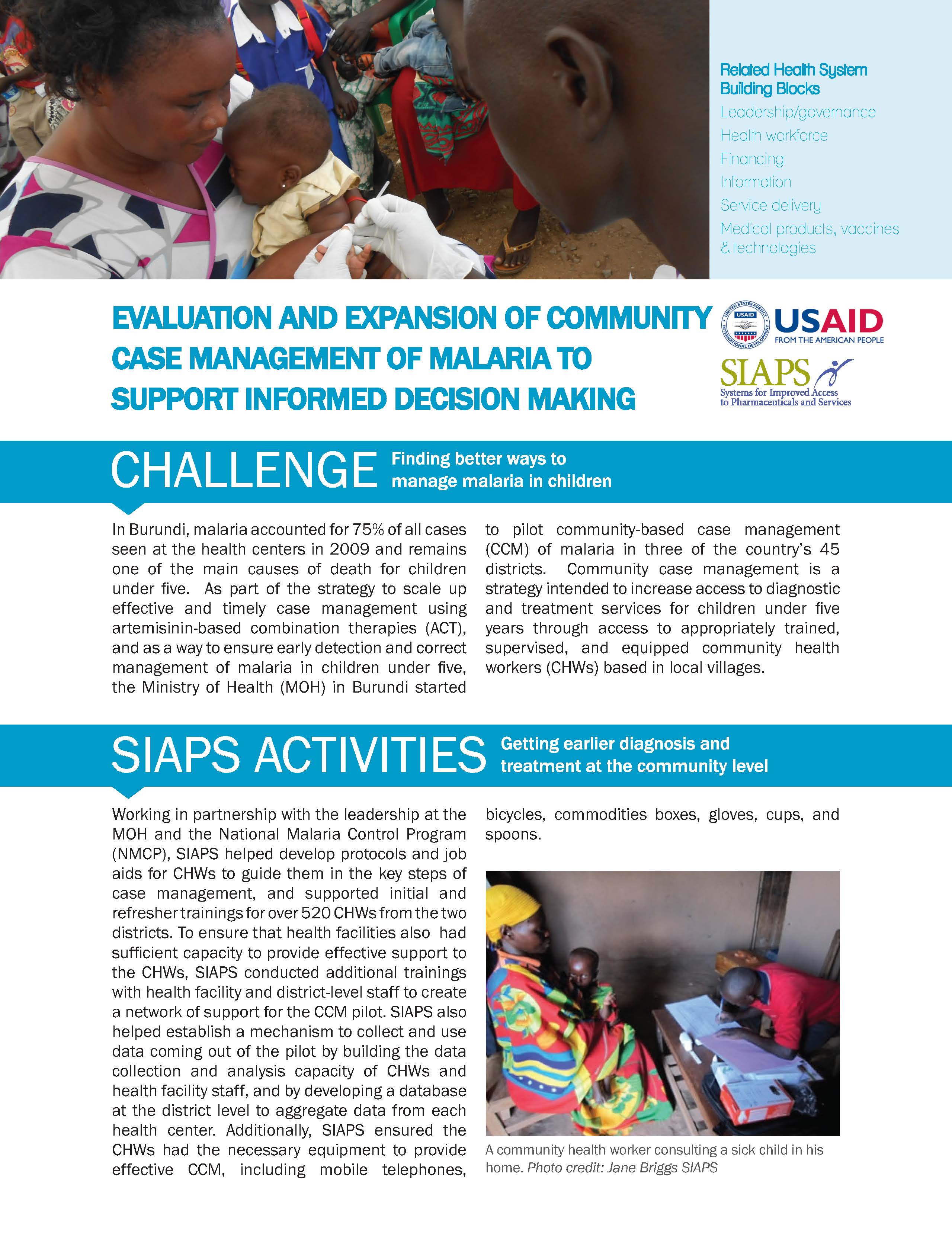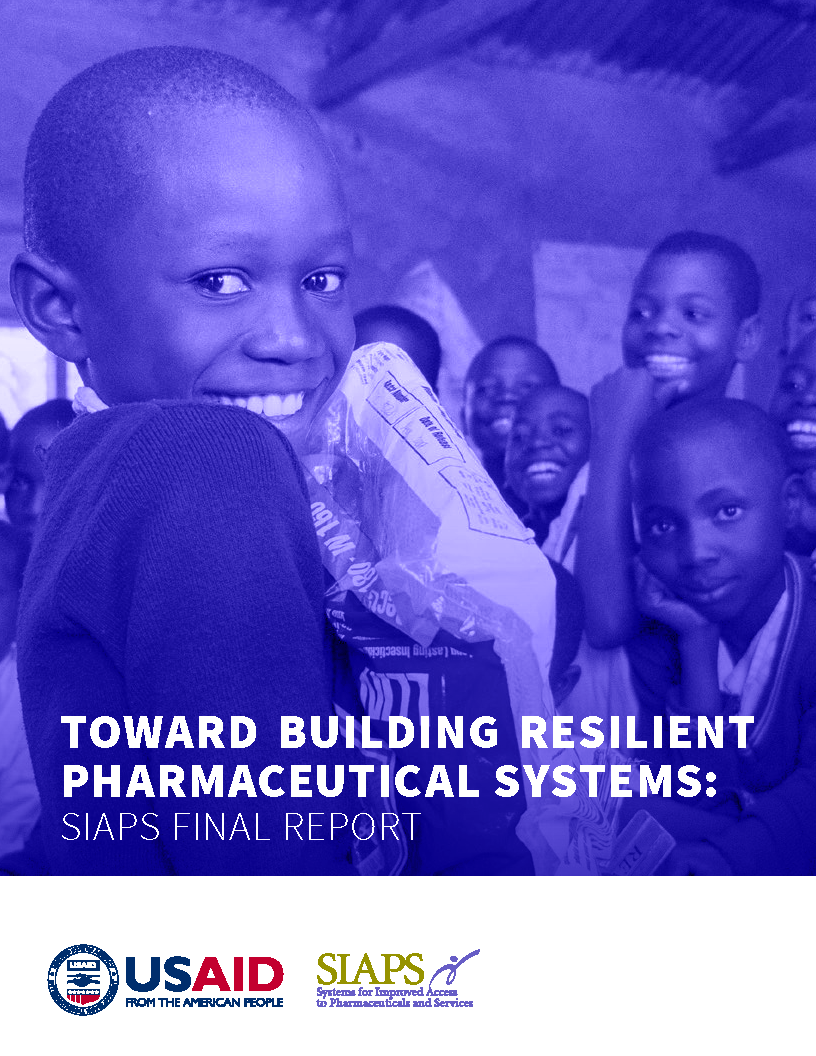
Working in partnership with the leadership at the MOH and the National Malaria Control Program (NMCP), SIAPS helped develop protocols and job aids for CHWs to guide them in the key steps of case management, and supported initial and refresher trainings for over 520 CHWs from the two districts. To ensure that health facilities also had sufficient capacity to provide effective support … Read more


